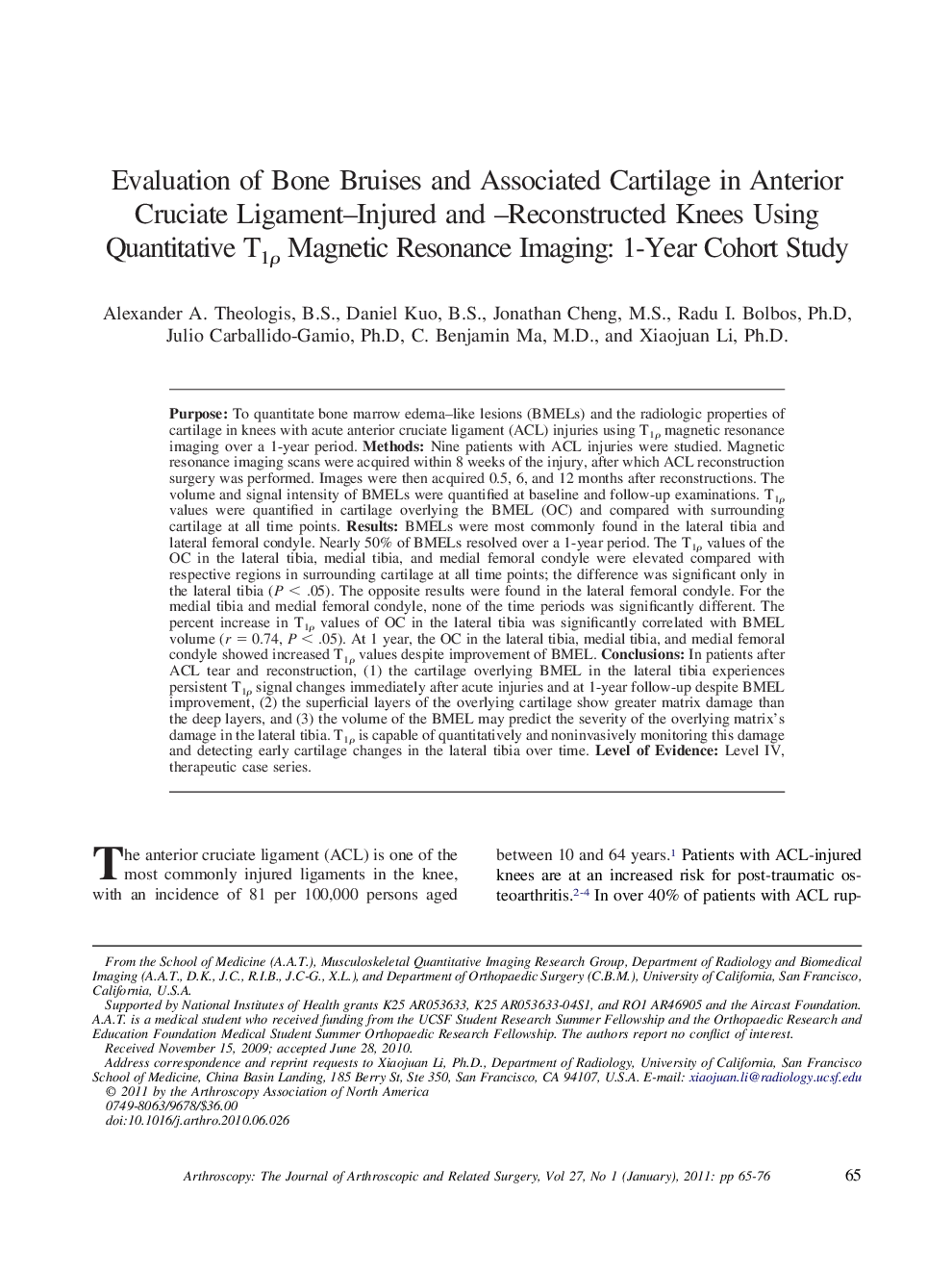| Article ID | Journal | Published Year | Pages | File Type |
|---|---|---|---|---|
| 4045767 | Arthroscopy: The Journal of Arthroscopic & Related Surgery | 2011 | 12 Pages |
PurposeTo quantitate bone marrow edema–like lesions (BMELs) and the radiologic properties of cartilage in knees with acute anterior cruciate ligament (ACL) injuries using T1ρ magnetic resonance imaging over a 1-year period.MethodsNine patients with ACL injuries were studied. Magnetic resonance imaging scans were acquired within 8 weeks of the injury, after which ACL reconstruction surgery was performed. Images were then acquired 0.5, 6, and 12 months after reconstructions. The volume and signal intensity of BMELs were quantified at baseline and follow-up examinations. T1ρ values were quantified in cartilage overlying the BMEL (OC) and compared with surrounding cartilage at all time points.ResultsBMELs were most commonly found in the lateral tibia and lateral femoral condyle. Nearly 50% of BMELs resolved over a 1-year period. The T1ρ values of the OC in the lateral tibia, medial tibia, and medial femoral condyle were elevated compared with respective regions in surrounding cartilage at all time points; the difference was significant only in the lateral tibia (P < .05). The opposite results were found in the lateral femoral condyle. For the medial tibia and medial femoral condyle, none of the time periods was significantly different. The percent increase in T1ρ values of OC in the lateral tibia was significantly correlated with BMEL volume (r = 0.74, P < .05). At 1 year, the OC in the lateral tibia, medial tibia, and medial femoral condyle showed increased T1ρ values despite improvement of BMEL.ConclusionsIn patients after ACL tear and reconstruction, (1) the cartilage overlying BMEL in the lateral tibia experiences persistent T1ρ signal changes immediately after acute injuries and at 1-year follow-up despite BMEL improvement, (2) the superficial layers of the overlying cartilage show greater matrix damage than the deep layers, and (3) the volume of the BMEL may predict the severity of the overlying matrix's damage in the lateral tibia. T1ρ is capable of quantitatively and noninvasively monitoring this damage and detecting early cartilage changes in the lateral tibia over time.Level of EvidenceLevel IV, therapeutic case series.
